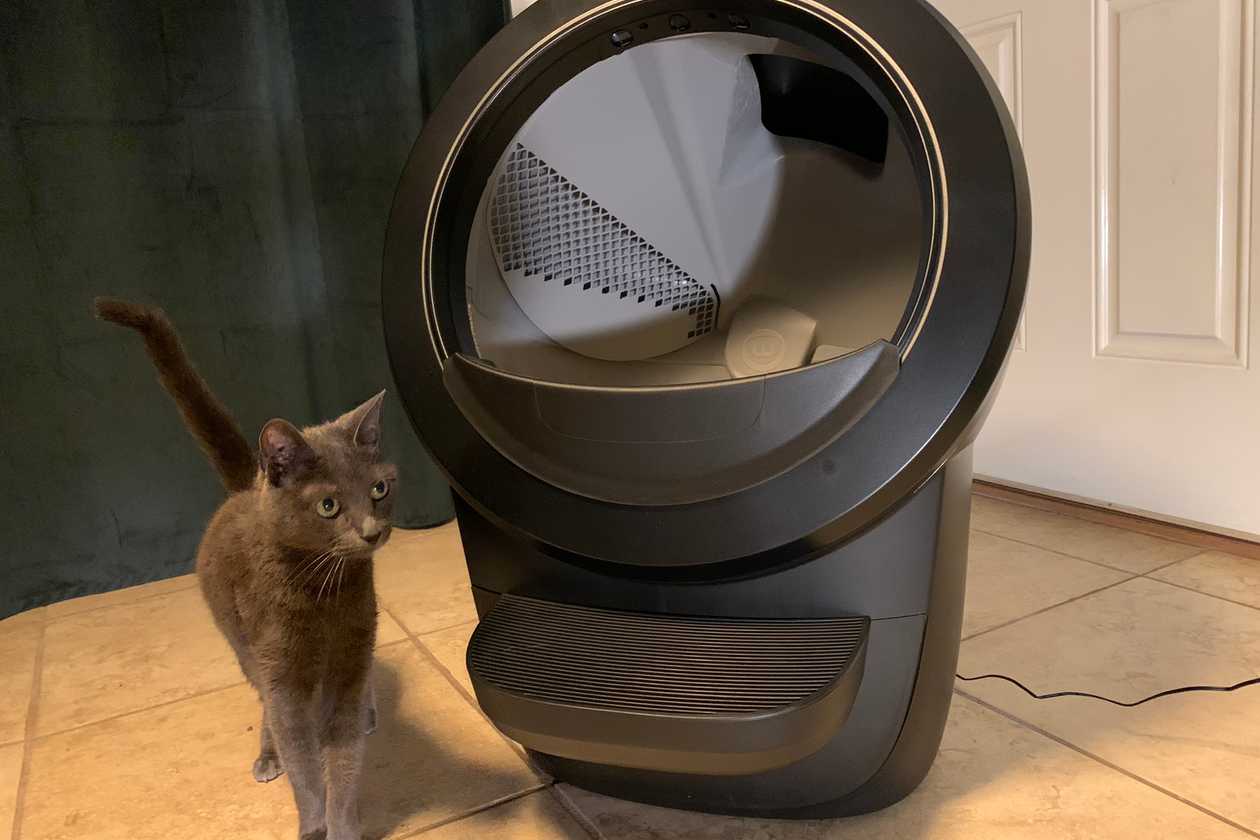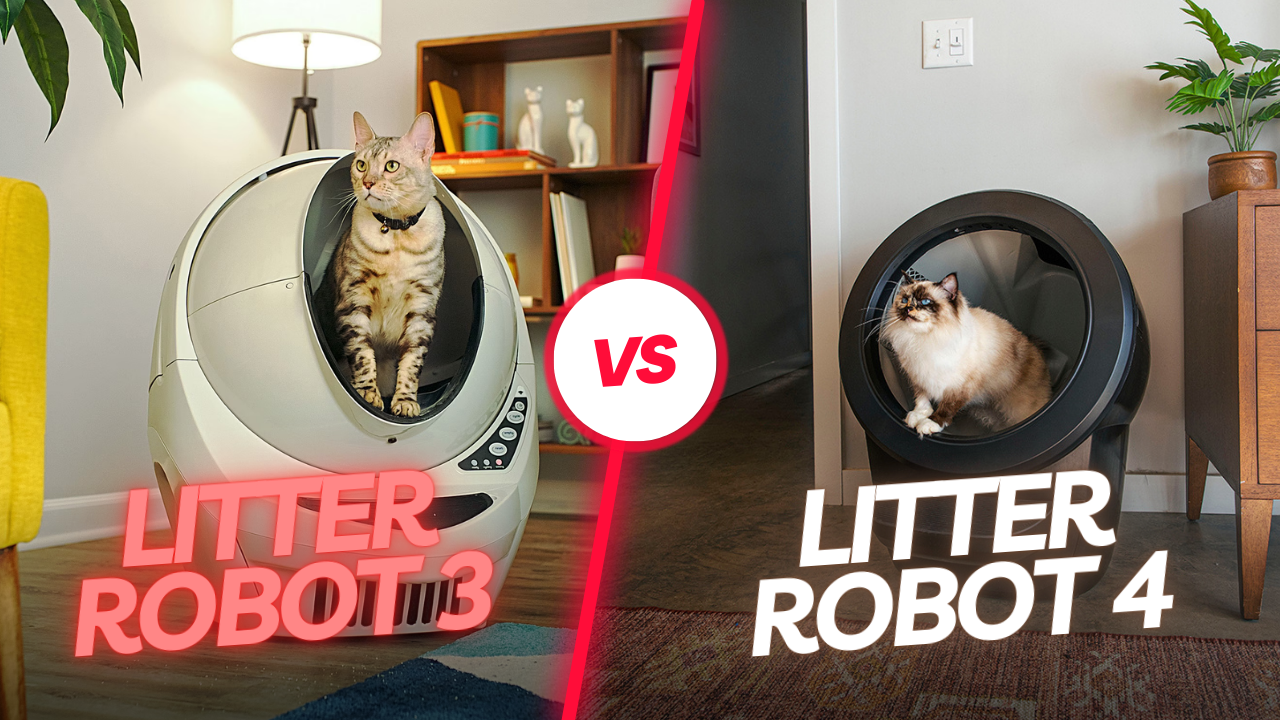Cats may avoid using a Litter Robot due to unfamiliarity or discomfort. Ensuring the device is clean and gently introducing your cat can help.
First-time encounters with a Litter Robot can be daunting for a cat accustomed to a traditional litter box. This high-tech alternative to old-fashioned litter trays offers convenience to owners, but felines might need time to adjust to its mechanized operations.
The transition from a standard litter box to a Litter Robot often requires patience, as cats rely heavily on comfort and routine. Addressing factors such as the unit’s noise, movement, and overall newness can play a critical role in successful adoption. Introducing a cat to the Litter Robot gradually, while maintaining a clean and inviting environment, typically encourages acceptance. Encouraging exploration through positive reinforcement can also increase the likelihood of your furry friend embracing this modern litter solution.

Credit: m.facebook.com
The Litter Robot Conundrum
Imagine a world where scooping cat litter is history. That’s the dream Litter Robot offers. But what happens when your feline friend refuses to set paw in this high-tech toilet? This dilemma puzzles many cat owners. Let’s explore the Litter Robot conundrum and uncover reasons your cat might give this device the cold shoulder, along with solutions to make peace between your pet and their automated litter box.
The Promise Of Automated Cleanliness
The Litter Robot claims to revolutionize cat care. With smart sensors and an automatic cleaning cycle, it keeps the litter box fresh.
- Self-cleaning technology promises a scoop-free life.
- Odor control keeps your home smelling clean.
- Waste compartment hides clumps away neatly.
Common Complaints From Cat Owners
Despite its advanced features, the Litter Robot sometimes faces rejection from cats. Owner feedback highlights frequent issues.
| Complaint | Possible Cause |
|---|---|
| Cat avoids Litter Robot | New smells or intimidating size |
| Robot activates too soon | Can scare skittish cats |
| Litter type not liked | Cats prefer certain litters over others |
Fear of the unfamiliar can keep cats away. It’s important to introduce new items slowly. Place the Litter Robot near the old litter box.
Adjust the delay timer to give your cat time to exit before the cleaning starts. This can prevent a scared cat from running away.
Finally, use a familiar litter inside the Litter Robot. Cats dislike change. Keeping the same litter can help them adjust.

Credit: www.amazon.com
Feline Preferences And Litter Box Habits
Cats are particular about their bathroom habits. Some cats may turn their nose up at a Litter Robot. This shift in technology can unsettle them. Understanding your cat’s preferences is crucial for a happy, clean home. Let’s dive into why your furry friend might be avoiding the high-tech litter solution.
Understanding Cat Litter Behavior
Each cat is unique. Cats need time to adjust to new environments and objects. A Litter Robot might seem alien to them. Observing your cat’s reactions can provide insights into their comfort levels.
- Stress from change can lead to avoidance
- Enclosed space might intimidate some cats
- Automatic cleaning noise could be frightening
These behaviors are often temporary. Patience and encouragement are key.
The Importance Of Litter Choice
The type of litter in a Litter Robot can make or break the deal. Cats have strong preferences for certain textures and scents.
| Texture | Scent | Example |
|---|---|---|
| Soft, fine-grained | Unscented | Clumping clay |
| Coarse | Lightly scented | Wood pellets |
Test different litters with your Litter Robot to find the right match. Notice which one your cat favors. Switching back to their preferred litter may resolve their hesitation.
Troubleshooting The Litter Robot
Is your feline friend ignoring their futuristic bathroom, the Litter Robot? You’re not alone! Many cat owners face this issue. But don’t worry, we’re here to guide you through some common hiccups. Understanding your furry companion’s behavior and the machinery can solve the mystery. Let’s narrow down the issue, starting with the initial setup.
Initial Setup MistakesInitial Setup Mistakes
Getting the setup right can make or break your cat’s acceptance of the Litter Robot. Check off these points to ensure a smooth start:- Location, location, location: Place the unit in a quiet, familiar spot.
- No surprises: Introduce your cat slowly to avoid spooking them.
- Training mode first: Use the training function to ease your pet into using the new system.
Remember, cats dislike change. Be patient and encouraging.
Maintenance and Cleanliness FactorsMaintenance And Cleanliness Factors
Cleanliness is next to cattiness. Cats love a clean environment, and the Litter Robot needs regular checks to work perfectly:
| Task | Frequency |
|---|---|
| Empty waste drawer | 1-2 weeks |
| Clean the globe | Monthly |
| Check for clumps and jams | Weekly |
| Wipe sensors clean | Monthly |
If you keep up with these tasks, your Litter Robot should stay welcoming for your pet.
Transition Techniques For Skeptical Cats
Welcome to our guide on easing your cat’s transition to a Litter Robot. Cats can be creatures of habit, hesitant to accept changes in their environment. Understanding this, we’ll discuss methods to help your feline friend adapt smoothly to their new automated litter box, turning skepticism into satisfaction.
Gradual Introduction To The Robot
Go slow for success. Cats need time to adjust to new things. Start by placing the Litter Robot in the same area as the old litter box. Don’t rush to remove the familiar box. Allow your cat to explore the new device at their own pace.
- Keep the old litter box nearby.
- Turn off the Litter Robot for now.
- Let your cat sniff and investigate.
Over time, gradually move the old litter box away. This encourages your cat to consider the Litter Robot. Once they start showing interest, it’s time to encourage a ‘test sit’ inside the robot—still turned off.
Creating Positive Associations
Making the new situation appealing helps your cat adapt. Sprinkle some used litter from the old box into the Litter Robot. Your cat’s scent in the robot reassures them it’s safe.
- Place treats or toys near the Litter Robot.
- Use familiar litter in the new setup.
- Give praise and pets when they show curiosity.
Once your cat regularly uses the new setup, initiate the auto-cleaning cycle. Start with one cycle a day to not startle your cat. With these transition techniques, your skeptical cat can become a Litter Robot pro.
When To Seek Help
Discovering that your cat refuses to use the Litter Robot can be puzzling. Knowing when to seek help is key for your cat’s health and happiness. It’s about finding a balance between patience and professional advice. This section will guide you through understanding when expert input may be vital.
Recognizing Behavioral Issues
As a responsible pet owner, monitoring your cat’s litter habits is crucial. Look out for these signals:
- Avoiding the Litter Robot entirely
- Eliminating outside the litter box
- Signs of stress when near the device
Behavioral shifts could indicate discomfort or dislike of the automated box. A timely response can prevent long-term aversions.
Consulting With A Veterinarian
If simple fixes don’t work, it’s time to consult with a veterinarian. They will assess:
| Medical Issues | Behavioral Concerns |
|---|---|
| Urinary infections | Litter box anxiety |
| Renal problems | Past negative experiences |
| Arthritis or mobility issues | Preference for traditional litter boxes |
An expert’s input ensures that any underlying health conditions are addressed, and your cat returns to healthy habits swiftly.

Credit: www.onlynaturalpet.com
Tailored Solutions For Persistent Problems
Cats may turn their noses up at high-tech litter solutions. This can leave you puzzled. Especially when an expensive Litter Robot sits unused. But don’t worry. There are ways to help your furry friend come around. Let’s explore tailored strategies to solve this feline challenge.
Alternative Litter Box Options
Not all cats fancy high-tech gadgets. They often prefer simple comforts. A straightforward approach can do the trick. Look at these options:
- Open Litter Trays: Large, rimless trays give your cat freedom.
- Covered Boxes: Some cats prefer privacy while they do their business.
- Self-Cleaning Boxes: For busy cat owners, self-cleaning options save time.
- Disposable Trays: Perfect for hassle-free clean-up.
High-tech Vs. Traditional: Finding The Right Fit
Finding balance is key. Your cat’s comfort matters most. Consider these points:
| High-Tech Litter Boxes | Traditional Litter Boxes |
|---|---|
| Automated cleaning | Manual scooping |
| Less odor | More natural feel |
| Costlier investment | More affordable |
| Uses electricity | Often biodegradable options |
Every cat has unique preferences. Some adore the whirs and clicks of new gadgets. Others shy away. Observe your cat’s behavior. This will guide your decision.
Frequently Asked Questions On Cat Will Not Use Litter Robot
Why Won’t My Cat Use The Litter Robot?
Cats may avoid new litter boxes due to unfamiliarity, scent, or dislike of the enclosed space. Introduce the Litter Robot gradually, keeping the old box nearby. Ensure it’s clean and in a quiet area.
How Do I Train My Cat To Use The Litter Robot?
Start by placing the Litter Robot near your cat’s current litter box. Put some used litter inside to add a familiar scent. Gradually reduce the amount of litter in the old box, prompting your cat to try the new one.
What Are Common Litter Robot Issues For Cats?
Cats can be skeptical of the Litter Robot’s movement and noise. Some may find the entry too high or the space inside too confined. Ensuring it is always clean and operational can help alleviate their concerns.
Can The Litter Robot Scare My Cat Away?
Yes, the automatic cleaning cycle of the Litter Robot can startle some cats. To acclimate your cat, run the cycle manually for a while and offer treats and praise to create positive associations with the device.
Conclusion
Troubleshooting a cat’s reluctance to embrace a Litter Robot can be challenging. Remember to approach the issue with patience and attentiveness to your pet’s preferences. Sometimes, a simple change in litter or location spurs acceptance. Stay persistent and considerate of your feline friend’s habits, and you might soon enjoy the convenience of a Litter Robot in harmony with your cat’s needs.



